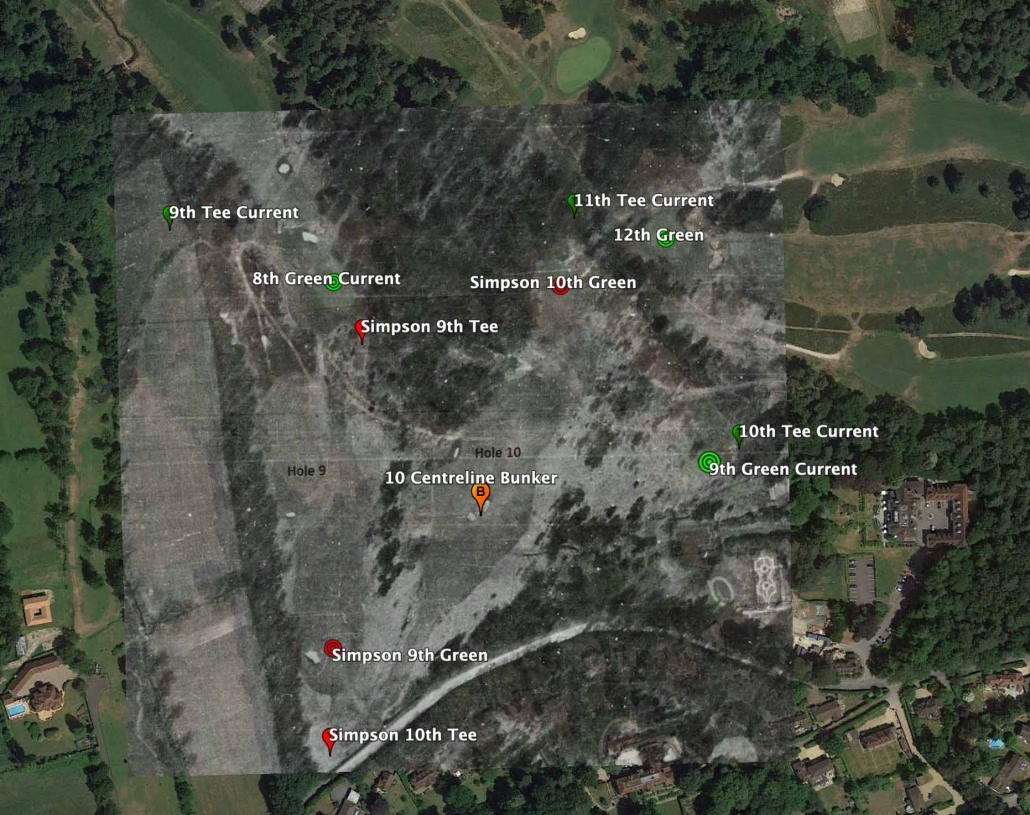Imagine having a world-class course that played a pivotal role in the history of the game. The roots of the modern game and every first-class course earth-wide could trace its design ethos to a single hazard complex, on a single hole. Imagine historical behemoths sketched, wrote and otherwise immortalised your course in the annals of history. However, imagine there is a hole that doesn't fit, is not regarded as a sound hole by most, and is held in disdain by the membership.
What are your options? Buy more land, hire a world-class architect and take your chances that the endeavour would be well received and worth the effort and expense. What would you do if you discovered that a legendary architect actually laid out the solution in 1937 and it lay waiting to be rediscovered?
This is precisely where Woking Golf Club finds itself. The membership is not enamoured with the ninth. The fairway canters left to right, around a left to right dogleg to an elevated green. The required tee-ball and approach are not shots most members have at their disposal. Ultimately, there is a distinct lack of strategy at the strategic home of golf.
From 1893 to 1936, the ninth and tenth played as two short par fours. The knock against them? They were similar, played back to back and above all, were blind or semi-blind. Charles Ambrose wrote: "...leaving the 8th green (the golfer) had to retrace his steps to a teeing ground which gave him a semi-blind drive across an old quarry; and if he hit this tee-shot properly, he was left with an iron shot of sorts to a green in a hollow, completely concealed by a ridge."
The Solution
The solution? In 1937, Tom Simpson made a blind, two-shot par-four ninth into a long par three. The new, elevated tee behind the current eighth green cured the blindness of the former tee shot. The new double-decker green brought forward and built into the ridge that previously caused all the bother on the approach. Three tiers provided two options. There was an opportunity for birdie if significant risks were successfully courted or a safe play to the first tier with two putts for par.
The conclusion, according to Charles Ambrose? "Altogether, it is difficult to find any fault with the new hole. It is excellent, both in conception and execution."
The result was the tenth had to change as well. Ambrose wrote: "The old tenth was, admittedly, the weak spot at Woking. For the tee shot, almost any old thing would do so long as the player steered clear of the cluster of bunkers on the right... then followed an iron shot up to a flat plateau green, towering high above the head of the striker, so that he had no idea where the hole was actually cut."
The new, tenth tee moved behind the old ninth green. A single hazard was introduced into the middle of the fairway 230 yards from the tee. There was a 30-yard wide strip of fairway to the left from which the green was orientated to accept a 200-yard shot. The new green site moved left on the precipice of the hillside. There was a bunker to the high side and low side of the green which both came into play if you approached the green from the left of the centreline bunker. A pond was located below the green which collected anything left short or left.
The Critics Response
What was the conclusion of the new tenth? Ambrose summarises "...When all is said and done... this hole may easily become one of the grandest in all of golf."
In 1959 the two holes were again changed to their current configuration in an attempt to chase down a Par 5. Some felt the course would be more highly regarded with the addition of a three-shot hole. Soon after completing the work, the arbitrary definition of par was changed which reduced the hole from a Par 5 back to a Par 4. Instead of reverting to Simpon's design, the club stayed the course.
From 1893 until 1937, the tenth was the weakest hole on the course. Between, 1937 to 1959, Simpson seems to have resolved the problem by creating two great holes from two indifferent. Since 1959, after alterations and with hindsight, the ninth is again regarded as the weak spot. A curious history of the Hidden Holes Woking Golf Club.
The Future
Where do we go from here? The only reasonable solution would seem to be to try the Simpson configuration. Tim Lobb and Andy Ewence are ambitiously improving the course. The reinstatement of Simpson's 9 & 10 should no doubt be high on the list as it would be popular with the membership and a marketers' dream. Will it soon be possible to play Simpson's newest holes, 70 years after they were lost? We hope so! The world of golf is owed it. One can only hope the Hidden Holes Woking Golf Club aren't hidden for much longer.
We wish to thank Lee Patterson for his contributions to this article.


